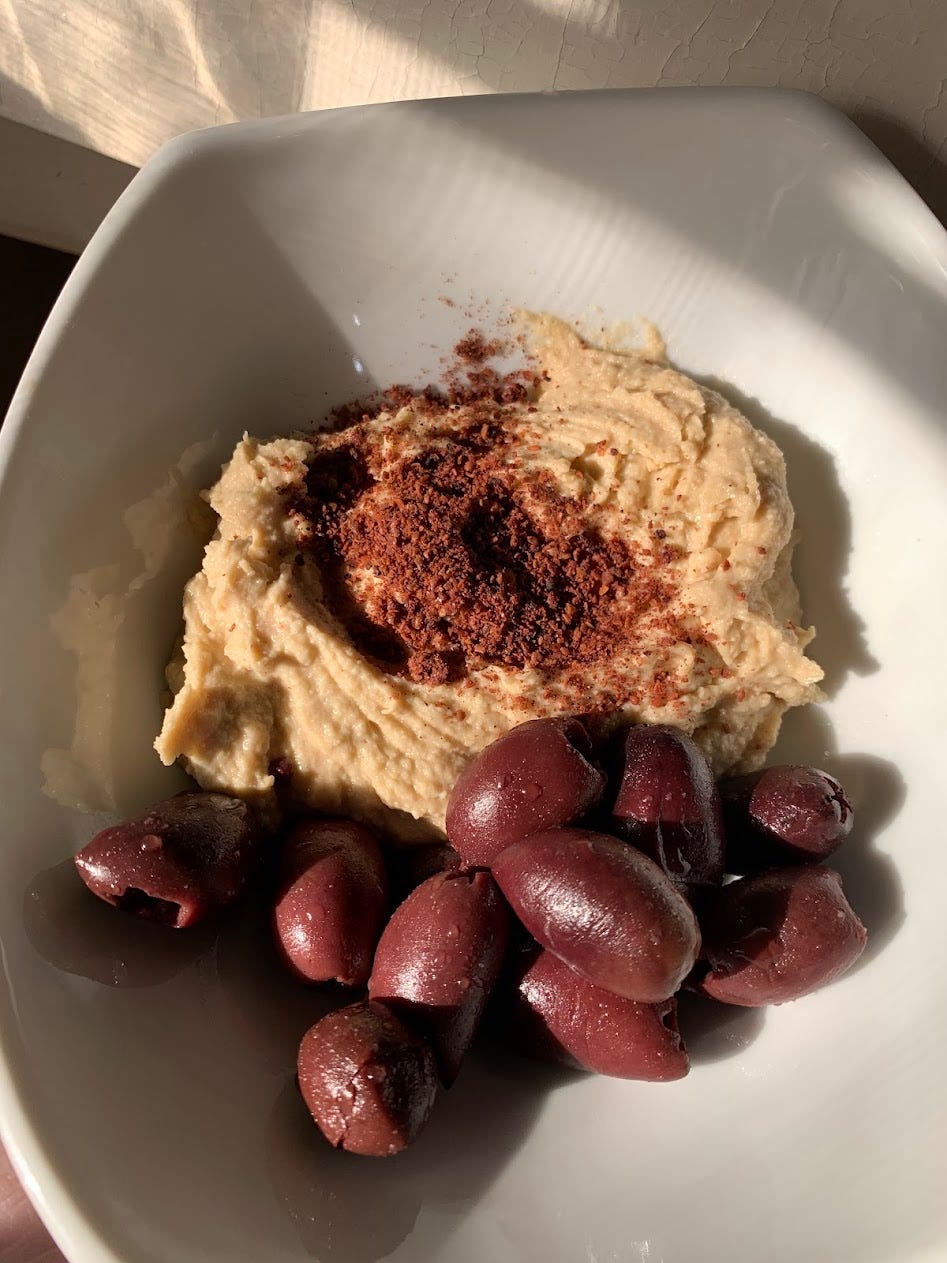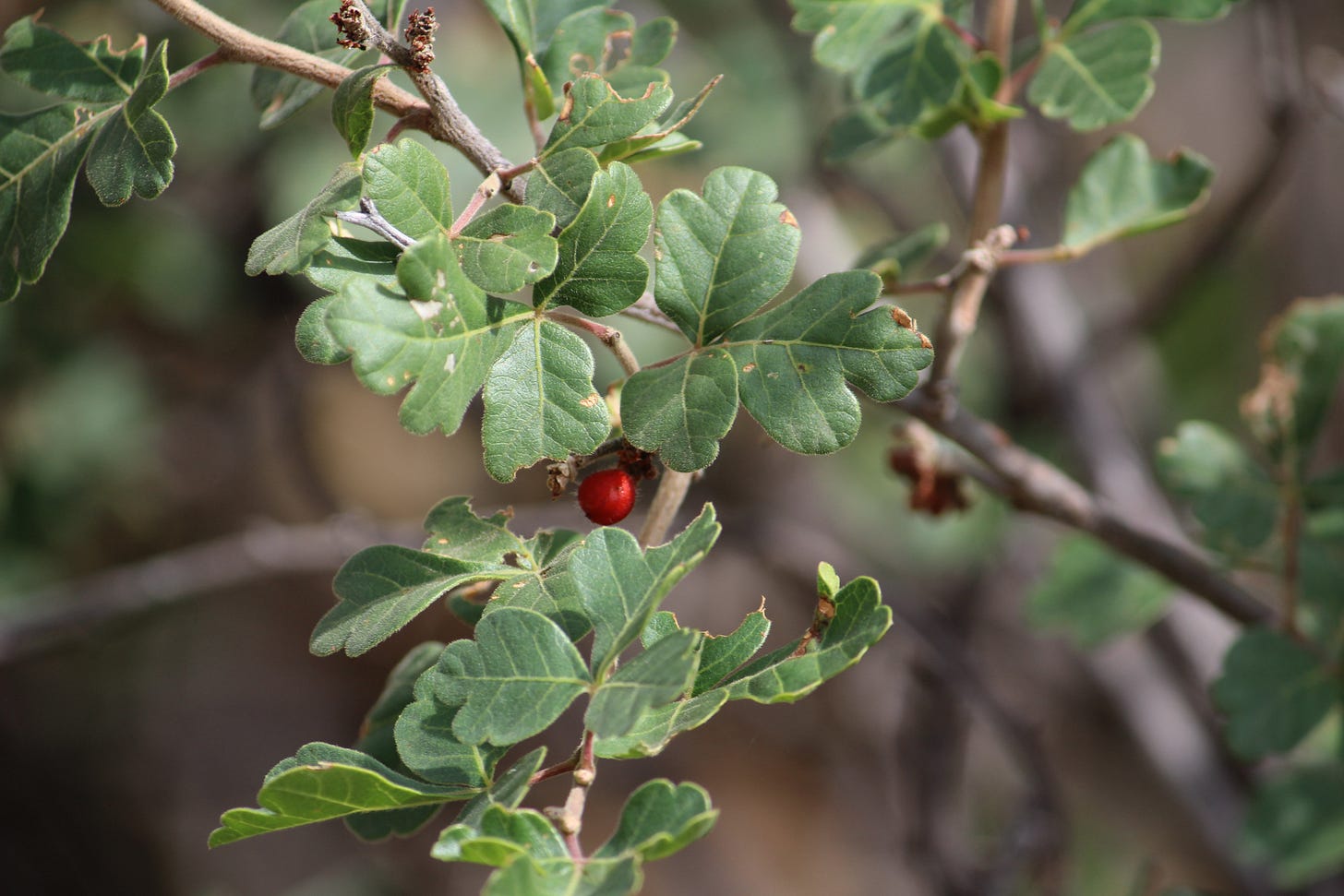When friend and fellow author LawDog first mentioned sumac to me, as a spice, I wondered silently if it was the same thing I thought of as sumac. Plant common names are so confusing at times! Later, browsing a Middle Eastern market and looking at it, I realized it probably was sumac as I thought of it based on color and texture. I got some, and the tart flavor convinced me. Sumac, a genus of plants called Rhus, are widespread globally, and this spice is made from the fruits of a species (Rhus coriaria) more common in the Middle East, but it is very similar to the Staghorn Sumac I’m familiar with which grows wild in New England, and whose fruit makes a nice pink lemonade-flavored beverage when steeped in water. Turns out, you can make the spice from either species, so if you have sumac wild near you, and you can be confident it’s not Poison Sumac (which does not have red fruits), you can forage this spice for yourself!
I’ve been enjoying learning how to use this spice. As you might guess from the citrusy, sour notes, it pairs well with chicken - I haven’t yet tried it with fish or shrimp, but plan to. I had it today simply sprinkled onto hummus and eaten with crackers, kalamata olives on the side, for a snack after working in the garden until my arms wanted to fall off.
There is even a sumac native to my area, although it’s not nearly so fruitful (heh) as the Staghorn. A friend told me that her mother used to harvest the Three-leafed Sumac berries and make jelly with them, which sounds like it would be very nice indeed. I need to find a few plants and see if I can do this in a few years.
If you have the space for sumac - and it needs space, as it spreads into thickets if left unchecked! - not only does it have fruits which can be harvested, or left to persist well into winter, like red flames borne on thick furry branches, but it has wonderfully crimson fall foliage. The big leaves are many-leafleted and make an attractive understory tree at the edges of woods. It does like a wetter place than where I live on the Dry Line, sadly, and also I have no room for it here. I’ll settle for the much slower growing dry land sumac shown above, even if I still have to buy the spice.
Recently sumac has been gaining in popularity and awareness here in America as a spice, so you are likely going to be able to find it in a specialty store, or as I did with my last purchase of it, Amazon. Sprinkle it on all kinds of things, and I think if you like citrus, you’ll like this!







My favourite way to use sumac is on grilled shrimp.
Any recipe that calls for lemon zest, can use sumac instead for a slightly different taste.
Hot diggety. I might be able to grow Staghorn Sumac. I have a handy forest for shade. The delta between 105 and 85 is usually full sun.
Worth a shot.
https://www.farmersalmanac.com/wild-edibles-sumac-berries